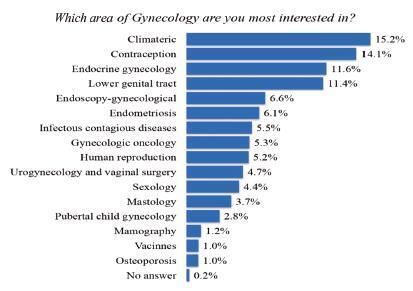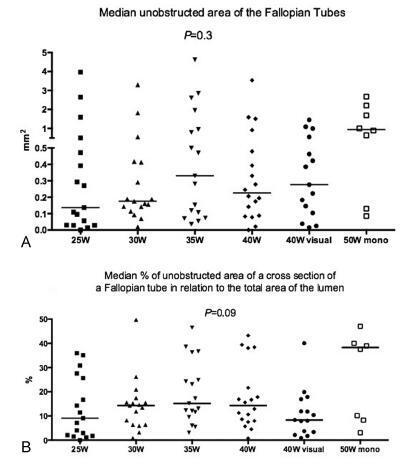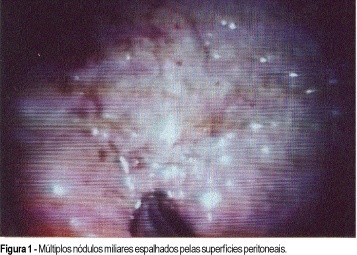You searched for:"Ricardo dos Reis"
We found (7) results for your search.-
Review Article
Combined Oral Contraceptive Use and the Risk of Cervical Cancer: Literature Review
Rev Bras Ginecol Obstet. 2023;45(12):818-823
Summary
Review ArticleCombined Oral Contraceptive Use and the Risk of Cervical Cancer: Literature Review
Rev Bras Ginecol Obstet. 2023;45(12):818-823
Views63See moreAbstract
Cervical cancer (CC) is caused by persistent infection of human papillomavirus of high oncogenic risk (hr-HPV); however, several cofactors are important in its carcinogenesis, such as smoking, multiparity, and prolonged use of oral hormonal contraceptives (COCs). Worldwide, 16% of women use COCs, whereas in Brazil this rate is of ~ 30%. The safety and adverse effects of COCs are widely discussed in the literature, including the increase in carcinogenic risk. Due to the existence of several drugs, combinations, and dosages of COCs, it is hard to have uniform information in epidemiological studies. Our objective was to perform a narrative review on the role of COCs use in the carcinogenesis of cervical cancer. Several populational studies have suggested an increase in the incidence of cervical cancer for those who have used COCs for > 5 years, but other available studies reach controversial and contradictory results regarding the action of COCs in the development of CC.
-
Febrasgo Position Statement
Fertility preservation in gynecologic cancer patients – Number 3 – March 2023
Rev Bras Ginecol Obstet. 2023;45(3):161-167
Summary
Febrasgo Position StatementFertility preservation in gynecologic cancer patients – Number 3 – March 2023
Rev Bras Ginecol Obstet. 2023;45(3):161-167
Views3Background Gynecological cancer directly affects fertility, as treatment consists of surgical removal of the reproductive system and/or exposure to gonadotoxic agents. However, patients in early stages who meet established criteria can be treated with fertility-sparing surgeries and reach equivalent oncological results to those of traditional treatments. Fertility preservation techniques such as cryopreservation of oocytes, embryos […]See more -
Original Article
Ovarian Sertoli-Leydig Cell Tumors: Epidemiological, Clinical and Prognostic Factors
Rev Bras Ginecol Obstet. 2019;41(7):440-448
Summary
Original ArticleOvarian Sertoli-Leydig Cell Tumors: Epidemiological, Clinical and Prognostic Factors
Rev Bras Ginecol Obstet. 2019;41(7):440-448
Views4See moreAbstract
Objective
To describe a series of cases of ovarian Sertoli-Leydig cell tumors (SLCTs).
Methods
Retrospective review of 12 cases of SLCT treated at the Hospital do Câncer de Barretos, Barretos, state of São Paulo, Brazil, between October 2009 and August 2017.
Results
The median age of the patients was 31 years old (15-71 years old). A total of 9 patients (75.0%) presented symptoms: 8 (66.7%) presented with abdominal pain, 5 (41.7%) presented with abdominal enlargement, 2 (16.7%) presentedwith virilizing signs, 2 (16.7%) presented with abnormal uterine bleeding, 1 (8.3%) presented with dyspareunia, and 1 (8.3%) presented with weight loss. The median preoperative lactate dehydrogenase (LDH) was 504.5 U/L (138-569 U/L), alpha-fetoprotein (AFP) was 2.0 ng/ml (1.1-11.3 ng/ml), human chorionic gonadotropin (β-hCG) was 0.6 mUI/ml (0.0-2.3 mUI/ml), carcinoembryonic antigen (CEA) was 0.9 ng/ml (0.7-3.4 ng/ml), and cancer antigen 125 (CA-125) was 26.0 U/ml (19.1-147.0 U/ml). All of the tumors were unilateral and surgically treated. Lymphadenectomy was performed in 3 (25.0%) patients, but none of the three patients submitted to lymphadenectomy presented lymph node involvement. In the anatomopathological exam, 1 (8.3%) tumor was well-differentiated, 8 (66.7%) were moderately differentiated, and 3 (25.0%) were poorly differentiated. A total of 5 (55.6%) tumors were solid-cystic, 2 (22.2%) were purely cystic, 1 (11.1%) was cystic with vegetations, and 1 (11.1%) was purely solid, but for 3 patients this information was not available. The median lesion size was 14.2 cm (3.2-23.5 cm). All of the tumors were at stage IA of the 2014 classification of the International Federation ofGynecology andObstetrics (FIGO). A total of 2 (16.7%) patients received adjuvant treatment; 1 of themunderwent 3 cycles of paclitaxel and carboplatin every 21days, and the other underwent 4 cycles of ifosfamide, cisplatin and etoposide every 21 days. None of all of the patients had recurrence, and one death related to complications after surgical staging occurred.
Conclusion
Abdominal pain was the most frequent presentation. There was no ultrasonographic pattern. All of the SLCTs were at stage IA, and most of them were moderately differentiated. Relapses did not occur, but one death related to the surgical staging occurred.
-
Original Article
Interest In and Practices Related to Gynecologic Oncology among Members of the Brazilian Federation of Associations of Gynecology and Obstetrics
Rev Bras Ginecol Obstet. 2019;41(6):394-399
Summary
Original ArticleInterest In and Practices Related to Gynecologic Oncology among Members of the Brazilian Federation of Associations of Gynecology and Obstetrics
Rev Bras Ginecol Obstet. 2019;41(6):394-399
Views1See moreAbstract
Objective
The present study aims to obtain basic demographic information, the level of interest and of training in gynecology oncology among Brazilian obstetricians and gynecologists (OB-GYNs) to create a professional profile.
Methods
An online questionnaire was sent to 16,008 gynecologists affiliated to the Brazilian Federation of Associations of Gynecology and Obstetrics (FEBRASGO, in the Portuguese acronym). We considered gynecologists dedicated to gynecologic oncology (OB-GYNs ONCO) those who self-reported that > 50% of their daily practice consists in working with women’s cancer care.
Results
A total of 1,608 (10%) of 16,008 FEBRASGO members responded. The OBGYNs are concentrated in the southern and southeastern states of Brazil. Gynecologic oncology was considered the 8th greatest area of interest in gynecology among the OBGYNs. A total of 95 (5.9%) of the OB-GYNs were considered OB-GYNs ONCO. Obstetricians and gynecologists are actively engaged in cancer care: > 60% of them dedicate up to 25% of their daily practice to oncology. The role of the physicians in screening and prevention, diagnosis, in the treatment of precancerous lesions, and in low complexity surgical procedures is notably high. Gynecologists dedicated to gynecologic oncology in Brazil have a heterogeneous, nonstandardized and short training period in gynecologic oncology. These professionals had a more significantly role in performing medium- and high-complexity operations compared with OB-GYNs (65.2% versus 34%, and 47.3% versus 8.4%, respectively).
Conclusion
The role of OB-GYNs and of OB-GYNs ONCO appears to be complementary. Obstetricians and gynecologists actmore often in screening and prevention and in low-complexity surgical procedures, whereas OB-GYNs ONCO are more involved in highly complex cases. Strategies to raise standards in cancer training and to encourage the recognition of gynecologic oncology as a subspecialty should be adopted in Brazil.

-
Original Article
Which mode and potency of electrocoagulation yields the Smallest Unobstructed Area of the Fallopian Tubes?
Rev Bras Ginecol Obstet. 2018;40(6):332-337
Summary
Original ArticleWhich mode and potency of electrocoagulation yields the Smallest Unobstructed Area of the Fallopian Tubes?
Rev Bras Ginecol Obstet. 2018;40(6):332-337
Views3See moreAbstract
Objective
To determine which mode and potency of electrocoagulation, using a modern electrosurgical generator, yields the smallest unobstructed area of the Fallopian tubes.
Methods
In an experimental study, tubes from 48 hysterectomies or tubal ligation were evaluated. Tubes were randomly allocated to one of the following groups: group A) 25 W x 5 seconds (n = 17); group B) 30 W x 5 seconds (n = 17); group C) 35 W x 5 seconds (n = 18), group D) 40 W x 5 seconds (n = 20); group E) 40 W x 5 seconds with visual inspection (blanch, swells, collapse) (n = 16); group F) 50 W x 5 seconds (n = 8). Bipolar electrocoagulation was performed in groups A to E, and monopolar electrocoagulation was performed in group F. Coagulation mode was used in all groups. Digital photomicrography of the transversal histological sections of the isthmic segment of the Fallopian tube were taken, and themedian percentage of unobstructed luminal area (mm2) was measured with ImageJ software (ImageJ, National Institutes of Health, Bethesda, MD, USA). The Kruskal-Wallis test or analysis of variance (ANOVA) was used for statistical analysis.
Results
Ninety-six Fallopian tube sections were analyzed. The smallest median occluded area (%; range) of the Fallopian tube was obtained in the group with 40 W with visual inspection (8.3%; 0.9-40%), followed by the groups 25 W (9.1%; 0-35.9%), 40 W (14.2; 0.9-43.2%), 30 W (14.2; 0.9-49.7%), 35 W (15.1; 3-46.4%) and 50 W (38.2; 3.1-51%). No statistically significant difference was found among groups (p = 0.09, Kruskal-Wallis test).
Conclusion
The smallest unobstructed area was obtained with power setting at 40 W with visual inspection using a modern electrosurgical generator. However, no statistically significant difference in the unobstructed area was observed among the groups using these different modes and potencies.

-
Original Article
Recurrent cervical cancer: symptoms at diagnosis are related to a worse prognosis?
Rev Bras Ginecol Obstet. 2014;36(12):569-574
Summary
Original ArticleRecurrent cervical cancer: symptoms at diagnosis are related to a worse prognosis?
Rev Bras Ginecol Obstet. 2014;36(12):569-574
DOI 10.1590/SO100-720320140005068
Views6See morePURPOSE:
The aim of this study was to evaluate the clinical features and prognostic implications of patients with recurrent cervical cancer.
METHODS:
By reviewing the medical records we evaluated all patients with cervical cancer at stages IA to IVA who started treatment at a specialized hospital in the Southeast region of Brazil from 2007 to 2009. Recurrence episodes were categorized according to location of disease and information was collected regarding the type of treatment and survival of these patients. The sample was characterized by descriptive statistics and association analyses were performed using Fisher’s exact test.
RESULTS:
Fifty cases of recurrence were identified among 469 selected records, with 31 patients being symptomatic at diagnosis of recurrence (62%); and 19 being asymptomatic (38%). Among women with symptoms, eight requested anticipation of the previously scheduled appointment because of the presence of clinical complaints. Patients with symptoms at the diagnosis of recurrence had lower rates of overall two-year survival (39.4 versus 67.6%) (p=0.081). None of the patients with recurrence at distance received curative intent treatment, but all received surgical treatment or radiotherapy aiming at full remission of the disease. Women who requested anticipation of the appointment because of the presence of symptoms had a significant reduction of overall two-year survival after recurrence (0 versus 60.4%; p<0.001) compared to those who attended the consultation on the scheduled date, and none of them received curative intent treatment. As expected, the patients who underwent palliative treatment with the main objective of improving quality of life and increasing survival but with no perspective of cure had a significant reduction in overall survival compared to those who were treated with curative intent (76.7 versus 35.4%; p<0.001).
CONCLUSION:
The benefit of detecting asymptomatic recurrence of cervical cancer has the potential to improve the prognosis of patients with local and regional recurrence, but studies on larger series are necessary to confirm this possibility.
-
Case Report
Pelvic Tuberculosis Simulating Ovarian Tumor
Rev Bras Ginecol Obstet. 2000;22(8):525-528
Summary
Case ReportPelvic Tuberculosis Simulating Ovarian Tumor
Rev Bras Ginecol Obstet. 2000;22(8):525-528
DOI 10.1590/S0100-72032000000800009
Views1See morePelvic tuberculosis is an extrapulmonary form of tuberculosis with increasing incidence in the western world. Clinical and laboratory findings of this disease are often unspecific and mimic a variety of other disorders, including gynecologic malignant tumors. The authors report a case of a 53-year-old woman with pelvic tuberculosis and associated abdominal tuberculous peritonitis. Laboratory investigation included laparoscopy, CA-125 levels and tuberculin test, among others. Discussion on the clinicopathological aspects and diagnostic methods used to elucidate this case is presented.

Search
Search in:
Tag Cloud
breast (42) breast cancer (42) breast neoplasms (95) Cesarean section (72) endometriosis (66) infertility (56) Maternal mortality (43) menopause (82) obesity (58) postpartum period (40) pregnancy (225) Pregnancy complications (99) Prenatal care (68) prenatal diagnosis (50) Prevalence (41) Quality of life (51) risk factors (94) ultrasonography (79) urinary incontinence (40) women's health (48)


